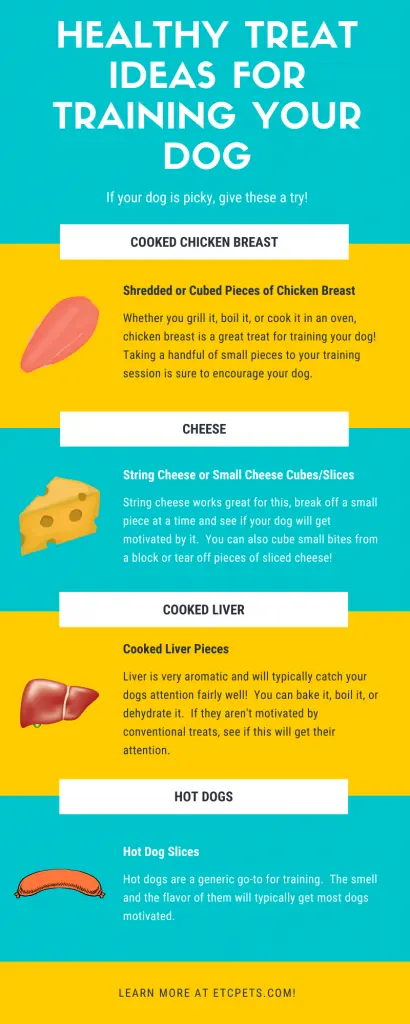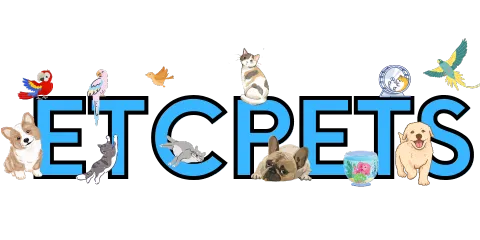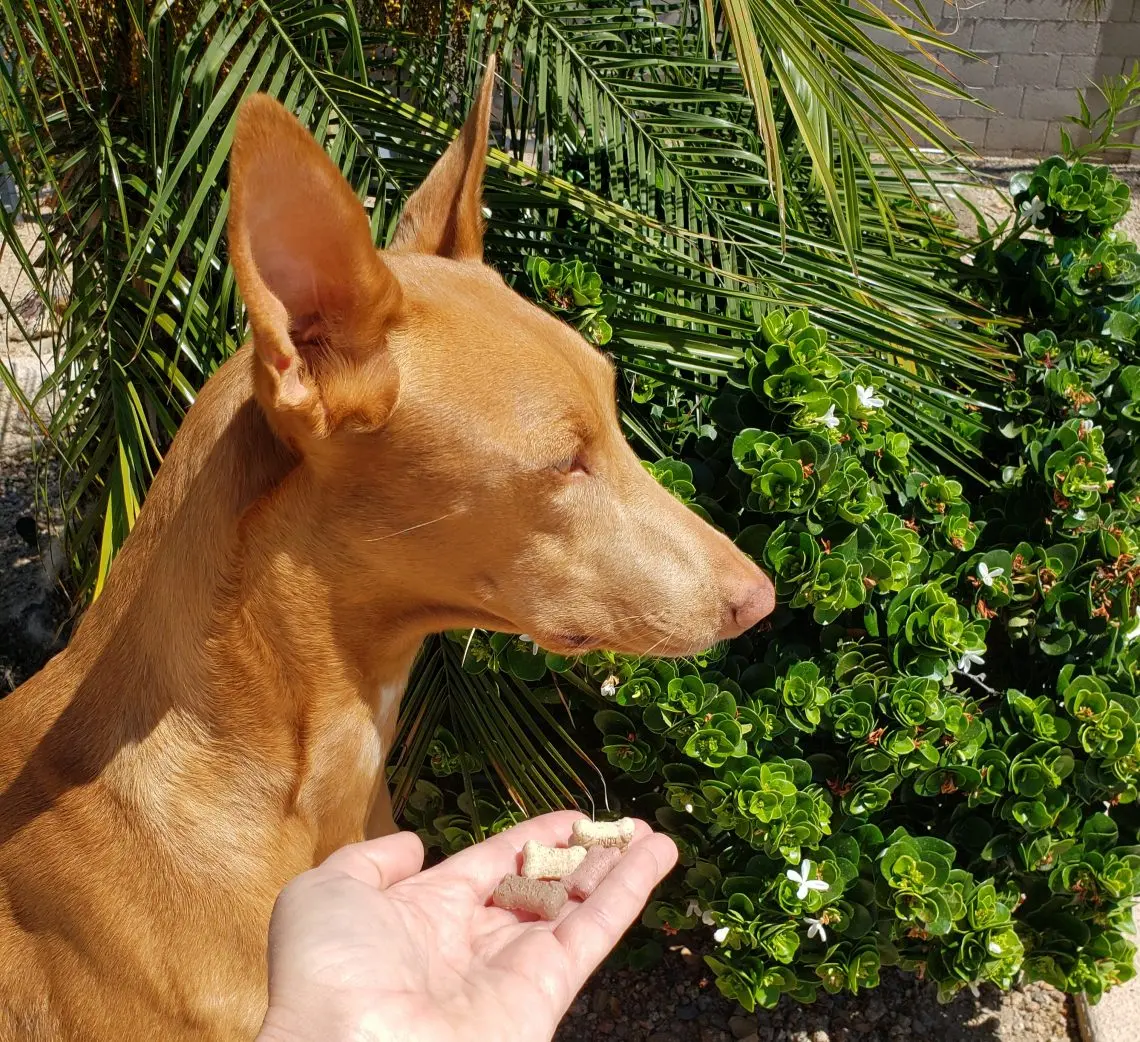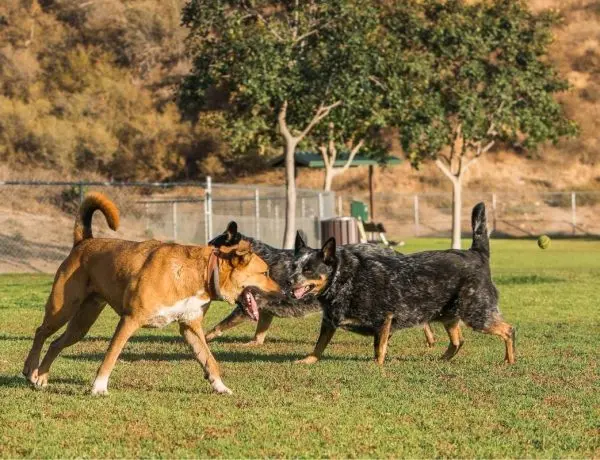Training a dog with treats is one of the most popular methods today, and it seems to be replacing many of the old-school ways of using correction and force. But what do you do if your pup doesn’t like treats?
In this article, we will look at how to train a dog that doesn’t like treats. We will explore some other rewards that can be used in place of treats and other training methods besides positive reinforcement that do not require food rewards. I will also give you some tips and tricks for increasing your dog’s food motivation in hopes of convincing them to enjoy treats as a reward if you would prefer to train with treats.
The simple basis behind positive reinforcement training is that you reward a dog for doing something you like. That, in turn, causes your dog to want to do that behavior more often in order to receive the reward. The most common reward used is a treat. That is because many dogs like treats and they are one of the easiest rewards for us to give to our dogs. But, a reward is only useful if it is something the dog WANTS to receive.
Table of Contents
Alternatives to Treats for Reward-based Training
If your dog is not motivated by a treat, there are several other rewards you can try! It is likely to take some trial and error to find out which of these rewards your dog finds motivating.
Toys & Play as a Reward
The most common substitute for a food reward is a toy reward. You can use a toy to lure your dog into position in early training just like you would do with a treat. A quick game of tug or fetch is pretty easy to offer immediately after the dog performs the command or behavior. However, the playtime must be kept short and intense if you wish to do more than one repetition of the exercise with your dog. Tugging is usually a better option for a training reward, as the dog stays engaged with you throughout the reward. Tossing a ball away from you for the dog to fetch changes the dog’s focus to the toy rather than you. If your dog prefers to play with the toy by themselves, instead of with you, it can make gaining their attention difficult.
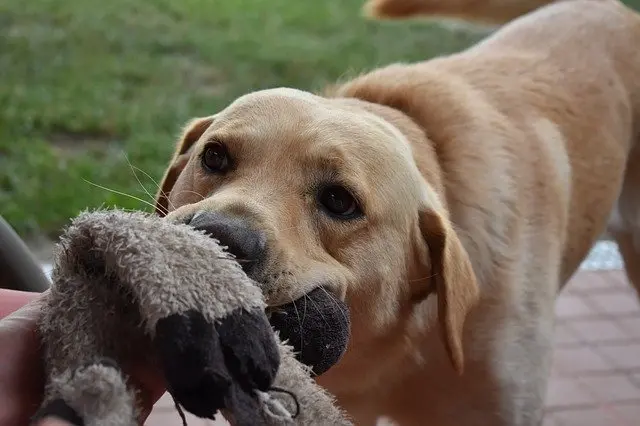
Several different types of tug toys can be used for training. Ropes are one of the cheapest and most popular tug toys for regular training. Competition trainers with high-drive dogs often opt for a more durable tug, such as one made out of leather. But for pet dogs that might not have much drive at first, you may have better success with a tug toy that offers some other motivation in addition to tugging – such as squeakers or softer material like the Charming Pet variety.
Be sure to keep your training toys put away when you are not training your dog. That will help keep their value higher, as the dog will only have access to them when you are working with your dog. A toy that is left out for the dog to play with at will is often not as motivating as that special toy that they have to work for! Remember to be extremely happy and engaging as you play with your dog – they will often match your level of enthusiasm. If your play is half-hearted, their response is likely to be as well.
Praise and Attention as a Reward
If you are lucky enough to have a dog that considers your praise and attention a high-value reward, training is easy! A dog that is motivated by an enthusiastic “good dog” is a joy to work with. Unfortunately, from my experience, these dogs are few and far between.
While most dogs do seem to enjoy our verbal praise and attention, it’s often low-value compared to chasing a squirrel or sniffing bushes. If you were not blessed with a dog that worships the ground you walk on and will do anything in their power for a kind word from you, don’t despair!
It is possible to increase the value of your verbal praise if you connect it to a higher valued reward. For instance, if your dog LOVES to play tug, give him a happy “good dog!” right before offering him the tug toy for a quick game. Over time, your dog will begin to associate the verbal praise with the fun game of tug through operant conditioning, which gives a more positive value to the words!
Physical Affection as a Reward
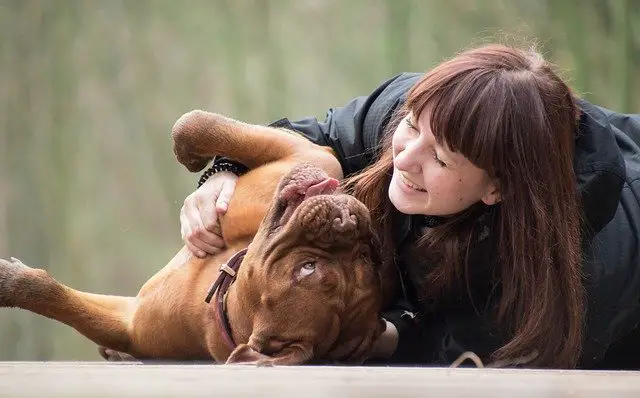
Some dogs genuinely enjoy a good chin scratch or belly rub! If this is the case with your dog, you can use that physical affection as a reward in training. You may have difficulty teaching new behaviors (just as you might if you are using praise and attention) because it is difficult to lure a dog into a position without an item for them to focus on (such as a treat or a toy). However, physical affection can be a valuable reward for some dogs, and it is an excellent way to reward behavior with a longer duration, such as a stay.
Using “Life Rewards”
There are many rewarding things in a dog’s life that you are in control of, such as walks, car rides, time snuggling on the couch, etc. Requiring your dog to offer a particular behavior before they are allowed access to these life rewards is another way of training a dog that doesn’t like treats.
Other Types of Training That Don’t Require Treats
Leashes and Corrections
With so many trainers switching to purely positive training techniques, leash corrections are not used nearly as much as they used to be. However, they can still be effective if used properly. Although your dog may not be as happy about training, if you have to train in the mode of positive punishment, it is still a way to get the job done. Unfortunately, if you are entirely unable to find anything motivational for your dog, this may be your only option.
Leashes are very valuable in training and do not HAVE to be used as a punishment or correction tool. A leash is an easy way of blocking your dog from a reward until they have behaved the way you want them to. For instance, if you have taught your dog to sit before exiting a door, merely preventing them from leaving by holding their leash until they sit will allow you to withhold the reward of the walk until they have performed to your satisfaction. No correction needs to be given in this situation; you are just blocking access to the “life reward.” You can then allow them access to the reward when they have done what you’ve asked of them.
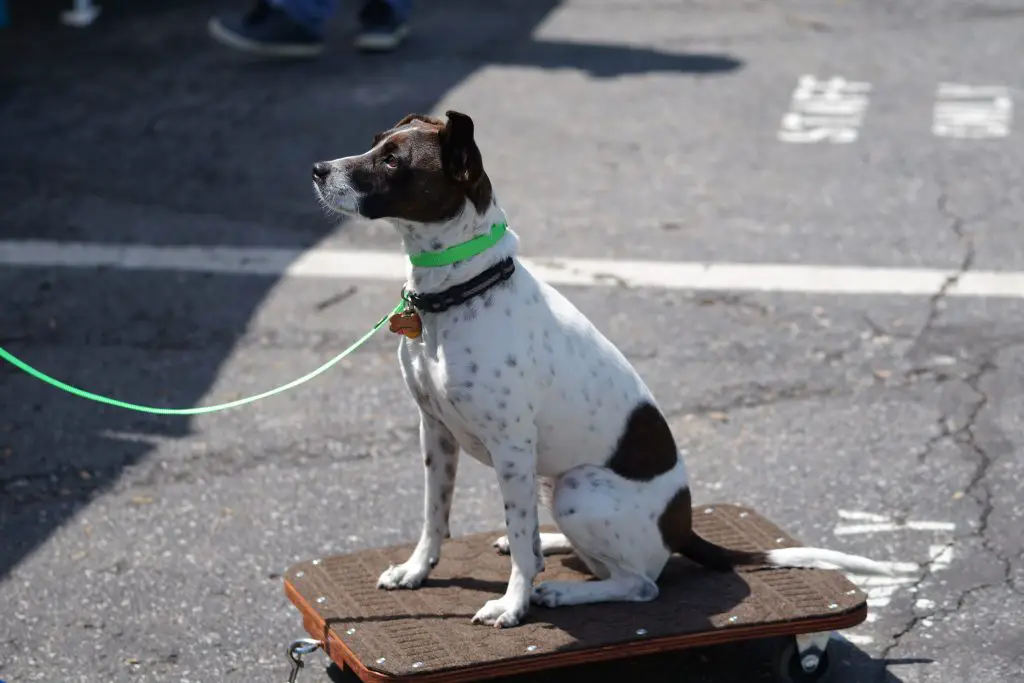
Electronic Collars
Electronic collars (also known as shock collars, or static collars) are among the most controversial training tools available today. While some people are completely opposed to them and consider them cruel, other trainers have had incredible success with them and created well-behaved, happy dogs that comply with their owners’ requests reliably.
I’m not going to detail how to use e-collars in this article, but I just wanted you to be aware of them as an option. If this is something you wish to explore more for your dog, please take your time and do your research! Interview trainers that are comfortable using them and observe the trainer working their personal dogs as well as other client dogs. Ask lots of questions and pay close attention to the attitudes of the dogs on the collars.
E-collars are a training tool, and there should be a plan in effect to eventually have the dog responding happily to commands without the use of the collar. I do not believe e-collars are the best route in most cases, but if you have exhausted all of the other options for training first, it may be something to consider.
Why Your Dog Doesn’t Like Treats
Food is something that all dogs need; therefore, it is natural for dogs to want to work for food/treats. There are rare dogs that just are not treat motivated no matter what you try. However, most of the time, there is a reason for their lack of food motivation. Before you give up on treat training completely, let’s see if we can find out why your dog doesn’t like treats.
Health Issues
Loss of appetite can be a sign of many health problems in dogs. Another common health problem that can create a seeming lack of food motivation is dental problems. If it hurts your dog’s mouth to eat, it would be understandable that he would be less motivated by treats as a reward.
Stress or Excitement
Anxiety will often decrease a dog’s interest in treats. This anxiety can be from fear of being in a new place or from being overly excited. You’ll see the anxiety from fear version many times when your veterinarian offers your dog a treat in the exam room, and they refuse it, yet they happily scarf it down when you get home.
If your dog’s lack of treat motivation is stress or excitement related, try training in places your dog is comfortable first, such as your home. Teach your commands and behaviors in these familiar areas first, and don’t ask your dog to do anything when he is in a place that he considers scary or too exciting. Spend time in those over-stimulating areas just hanging out and allowing him to observe and become comfortable long before offering a treat.
Distraction
This is similar to the lack of treat motivation due to stress or excitement, and the remedy is similar. Sometimes there is just too much going on for your dog to pay attention to you and your treats. While a treat might be interesting and exciting to your dog in their backyard around the things they see every day, it may pale in comparison to the excitement of watching other dogs and children playing at a park.
Again, if this is the case, keep your initial training confined to less exciting places where you and your treat are the most interesting things around. Continue to expose your dog to the distracting environments from a greater distance and without requiring specific behaviors from them. As they become more used to distraction, you will likely see their interest in you and your treats increase.
Your Dog Is Getting Too Much Food
If your dog is not hungry, he will be much less likely to want to work too hard for a treat. Many owners overfeed their dogs without realizing it. The guidelines on the back of your dog food bag are just that, guidelines. They don’t take into consideration your dog’s individual metabolism and activity level.
Unfortunately, here in the US, we are becoming more used to seeing overweight dogs and considering that to be normal. Remember, dog food companies want to sell dog food! So, it’s not unlikely that they would push more toward the upper end of the spectrum when recommending how much to feed your dog.
If plenty of food is readily available for your dog anytime they wish, you will naturally decrease their motivation to work for a treat. Just as a millionaire is less likely to want to do a job that pays them $20, why would your dog want to work for something already available to them? I’m certainly not saying to starve your dog to get them to work for treats, but if your dog is not finishing their meal as soon as you offer it to them, you might try cutting the amount back a bit to where they will finish it quickly. It can also help to do your training sessions BEFORE feeding your dog. That will help make the treats more attractive to your not-so-food-motivated dog.
Your Dog Sees Treats as Traps
If you are always trying to bribe your dog with a treat to do something they don’t want to do, that treat can take on a new meaning to your dog. For example, you lure your dog into his crate with a treat each morning before you leave for work. Over time, again due to operant conditioning, that treat is now associated with being confined and left alone. It’s not hard to imagine why your dog soon finds treats less attractive! That can also happen if you are always offering treats in scary situations. While your intentions may be good, and it will work positively in some cases, other dogs will start to associate treats with negative feelings, and therefore the treats will lose their value.
How to Encourage Food Motivation
Now that we’ve explored some of the reasons your dog may be lacking food motivation, I want to offer you some suggestions that may help alleviate those reasons.
Take Your Dog to the Vet for a Health Check-up
If you think there may be a medical reason behind your dog’s lack of appetite, a trip to your vet is needed. That would be the case, especially if your dog is also not interested in their regular meals. Before any significant changes in your training routine, a checkup and possibly blood work should be done to rule out any medical problems.
Be Sure To Monitor Food and Feed the Proper Amount
As I said above, many dogs are overfed without their owners even realizing it. Sometimes this happens from following the guidelines on the dog food back without considering metabolism or activity level. It can also be a problem if multiple people in the household are feeding the dog more food or more often than the others realize.
Be sure to keep track of “extra food” that your dog might have access to as well, such as cat food, the cat box (Ewww!), other dogs’ food, the wildlife they may be catching and eating, and table scraps or treats that they get throughout the day.
Humans often equate food with love, and we tend to give extra portions of food to make us feel that we are proving our love to our dogs. Make a conscious effort to keep track of everything your dog eats throughout the day. Use an actual measuring cup, so you know exactly how much dog food you are feeding, and write down EVERY treat your dog gets. Doing a food diary for a week or so can be an eye-opening exercise!
Don’t Free-feed Your Dog
Leaving food out for your dog to nibble on throughout the day is a trainer’s worst nightmare! It makes it difficult to convince a dog to “work” for a food reward if they have free access to food whenever they want.
I recommend that you have set mealtimes for your dog (once or twice a day), and you schedule your training sessions before that mealtime, not after. Making your dog wait for you to prepare their food is a subtle way of gaining some respect from your dog as well. Although you are the one that purchased the food initially and made it available to your dog, he won’t see it that way if it is always available for him whenever he wishes. The simple act of waiting for you to prepare his food and offer it to him will raise you slightly on the leadership chain.
Designated mealtimes, where you remove any leftover food five minutes later, will allow you to control his weight better, as it makes it much easier to increase or decrease the amount of food given to him. It will also help you monitor better if there is a change in appetite and allow you to address that sooner, which might mean catching an illness earlier! And, should you ever need to medicate your dog with food or on an empty stomach for something, it will make that task much more manageable.
Don’t Feed From a Bowl; Ask Your Dog to Work for His Food
This is probably the most valuable bit of advice I can offer you! Before they were completely domesticated, dogs needed to hunt and forage for their meals. We can take this instinct and use it to our advantage in training. Especially if you are worried about adding extra calories to your dog’s diet with treats, you can try using their regular meals as a training opportunity.
Instead of just setting the bowl in front of your dog, use mealtime as training time. You can teach basic commands to your dog and use a piece of kibble as a food reward. That is likely to help with the dog that eats meals regularly but doesn’t seem to have much interest in training treats. Even just being a bit more creative with your dog’s mealtimes can help increase food motivation. Try offering your dog’s meal to them in an interactive toy that they have to work at to get the food out of such as the Bob-A-Lot – my dogs love working on getting their kibble out of that toy!
If your dog is new to the concept of working for their food, you might want to start with something more simple like a Snuffle Mat – or you can make your own by following these directions! You will likely be surprised at the increase in food motivation your dog will have when mealtime becomes a more engaging activity for them!
Try Different Treats
This seems obvious, but it is something that is often overlooked. If your dog eats his meals well but doesn’t seem interested in treats try different treats – like these from Happy Howie! Just like humans, dogs have different taste preferences. While some dogs will go crazy for a Milk-Bone, others much prefer string cheese or a bite of chicken. The only way to know for sure which treats your dog prefers is to try different ones! As a general rule, the smellier and softer the better!
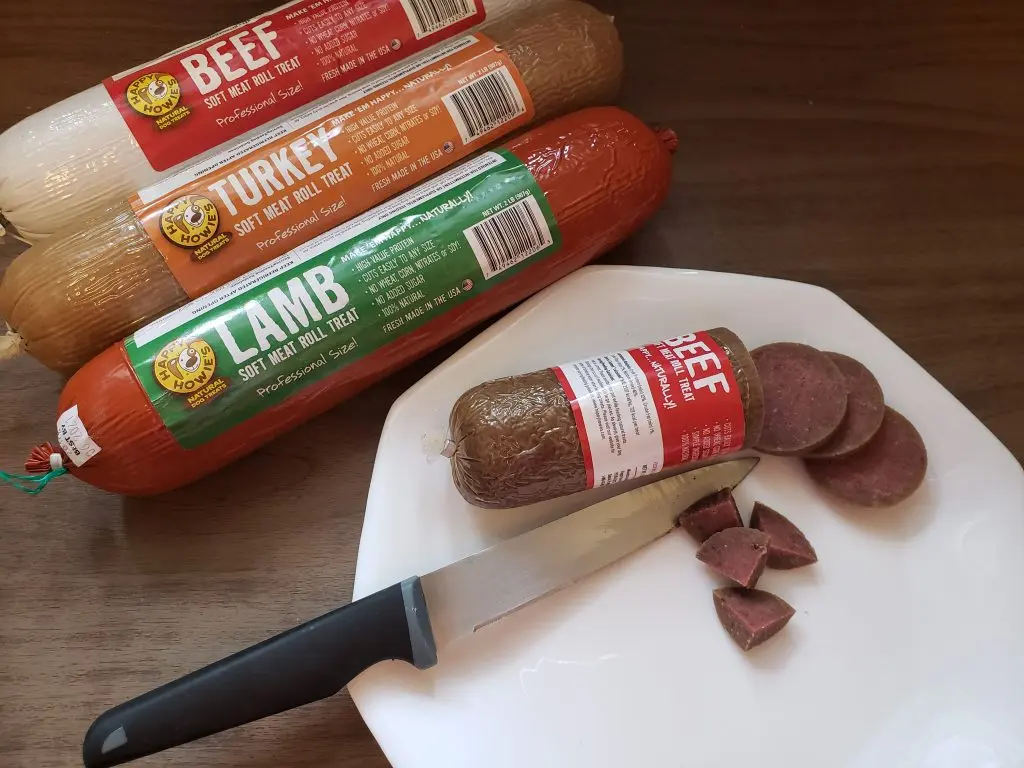
If your dog turns up his nose at a dog biscuit, you might want to try something out of your refrigerator instead. Hot dogs, string cheese, and deli meat are all popular choices. So long as your dog doesn’t have a food allergy and you stick with mostly natural ingredients (and keep your portions very small), you should be fine!
I have found that having treats of varying value is helpful as well. As the difficulty of the task and the degree of distraction increase, you need to increase the treat value. So, although your dog’s regular kibble might work great for teaching your dog to sit in your living room, you may need to bring out the deli meat rewards if you are going to ask your dog to perform that same sit during training class with other dogs and people around. Regardless of your treat, keep the portions small; your dog will work equally as hard for a tiny piece as they will for a big chunk! If you keep your treats tiny, your dog will have more room in their tummy for additional treats, which means you will be able to keep their focus on training for a more extended period.
Be Sure to Associate Treats with Positive Things
As I mentioned before, if you are always trying to offer treats to your dog when they are uncomfortable with something, the treat itself may trigger the feeling of being uncomfortable for your dog.
To prevent this, begin offering small treats to your dog along with some of their favorite things when they are happy and comfortable. Incorporate little training treats into your playtime with your dog, without asking him to do anything extra. If he enjoys snuggling on the couch with you, offer a treat now and then along with the snuggles. Over time, this will help him associate positive things with food rewards and may increase his motivation for a treat even in more challenging situations.
Final Thoughts
As a trainer, I prefer working with dogs that are food motivated…it just makes life easier! While I don’t believe treat training is the only option, it is an easy, fun way to train young puppies, and a fantastic method to use in conjunction with other techniques for dogs of all ages. I have found it to be one of the easiest ways to teach dog owners, which they often have the most success with.
If you have tried the techniques in this article to increase your dog’s interest in food without success, please consider some of the alternative reward-based suggestions before reverting to aversive training.
I started my training career over 20 years ago, using mostly corrections and praise, and I did so with a lot of success. However, over the years, I have gradually started leaning toward much more reward-based training, and I have been even more pleased with the results! I still firmly believe that dogs need to have boundaries and expectations set for them. However, I’ve found that I’m able to have much happier working dogs if the majority of their training is centered around working for a reward (whether that is food, toys, or affection) rather than working to avoid a correction.
